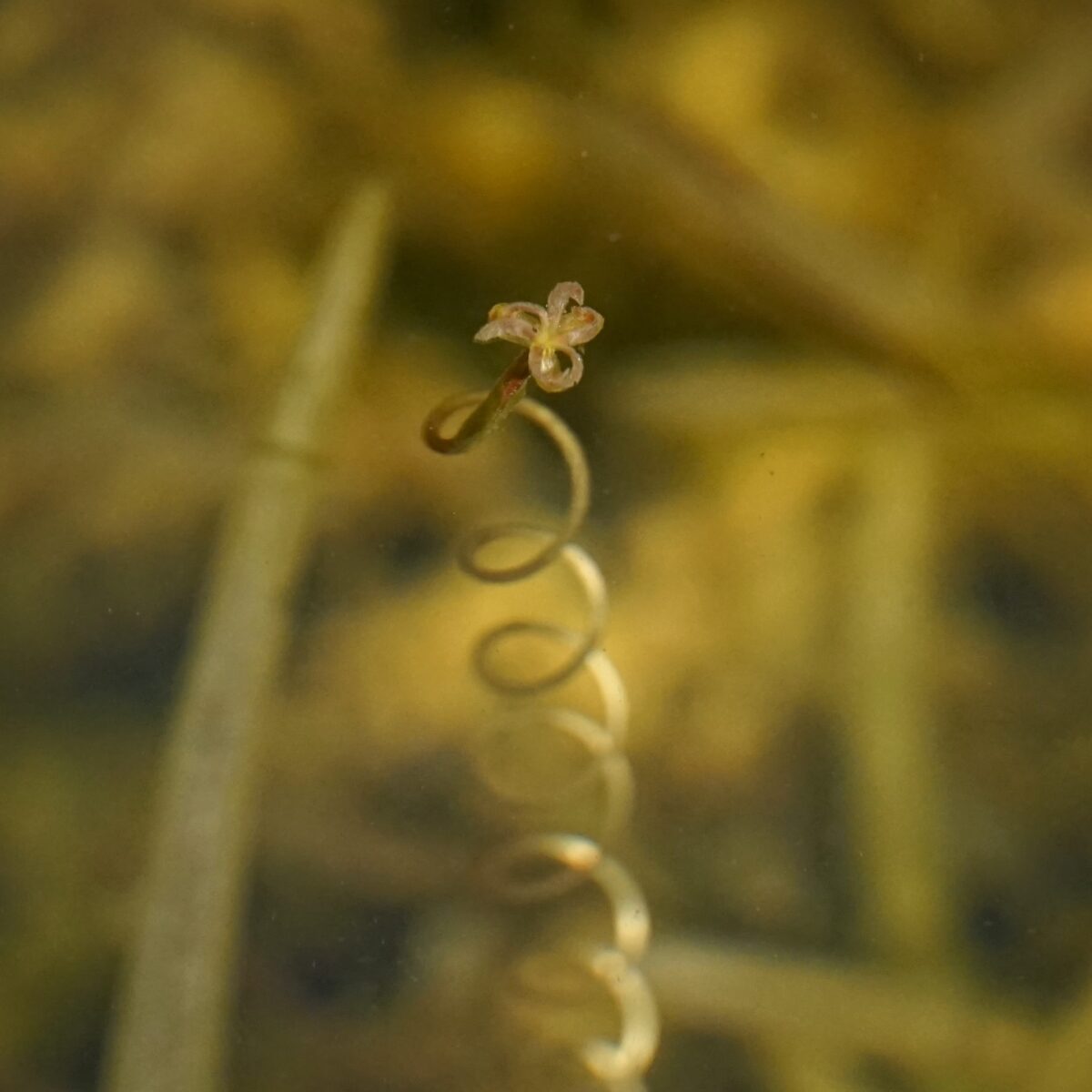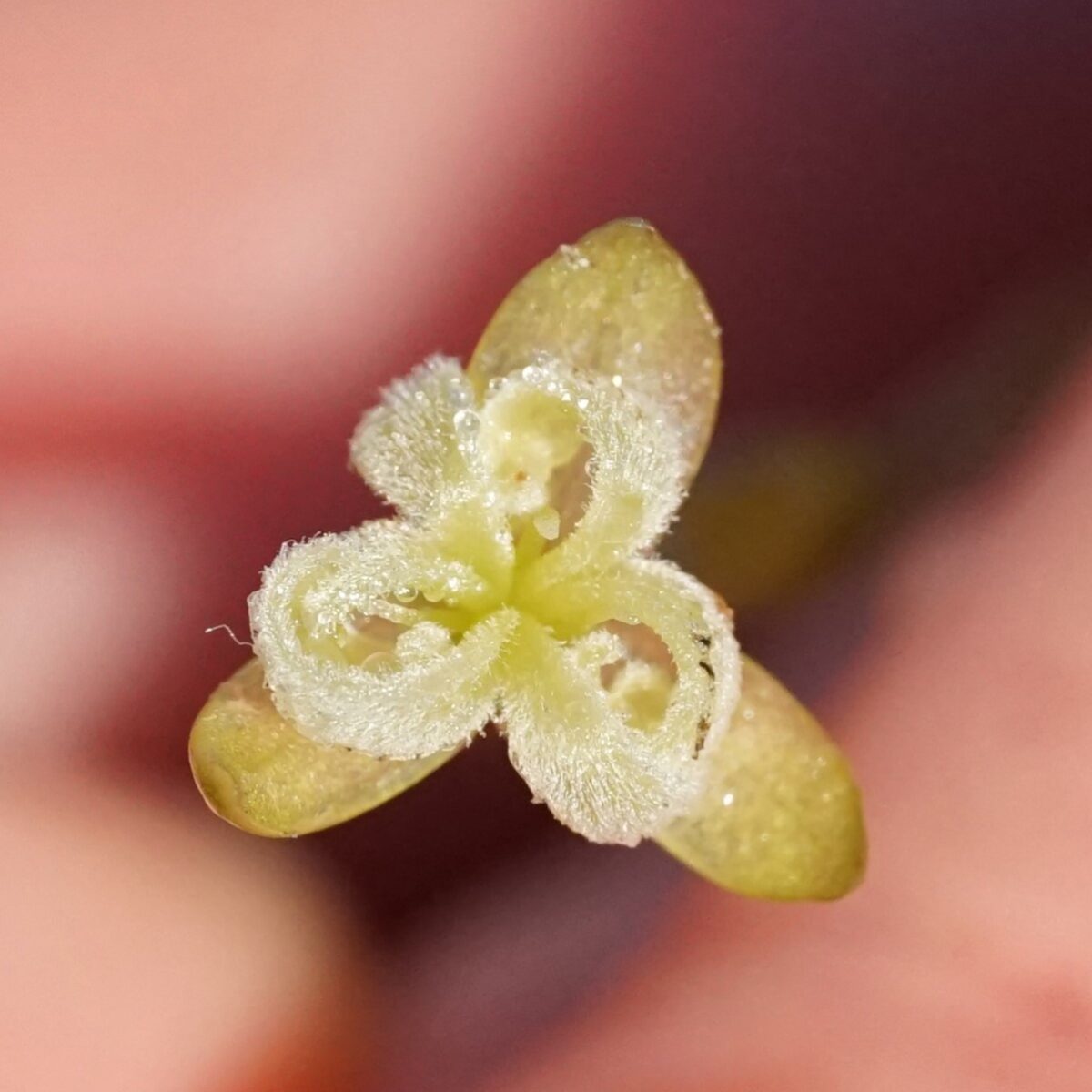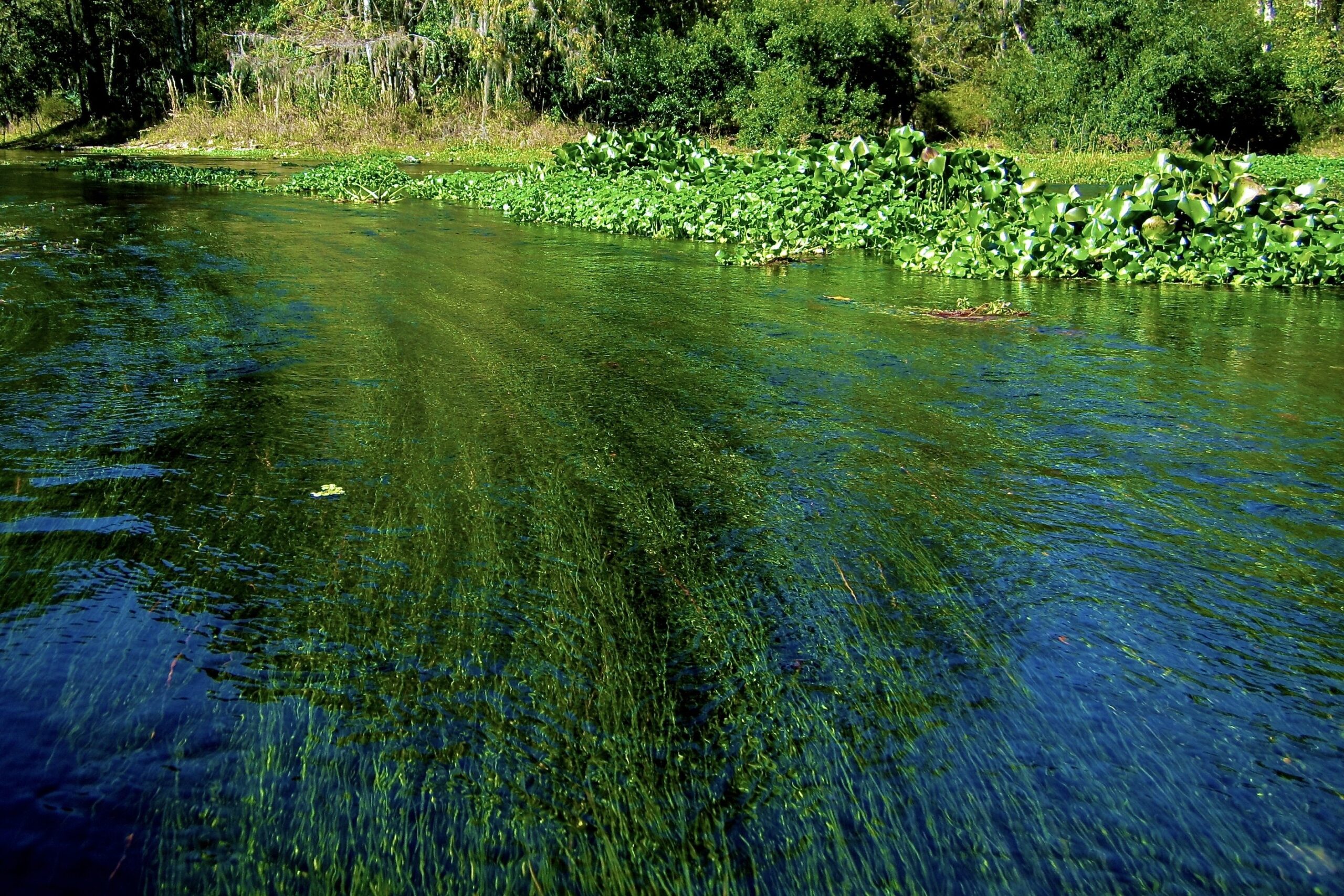Eelgrass
Pictured above: Eelgrass (Vallisneria americana) covering a river bottom, by Emily Bell. Click on terms for botanical definitions. View post as a PDF.
Eelgrass (Vallisneria americana) is a rooted submersed aquatic plant found in lakes, rivers, springs and estuaries across Florida. It is also commonly referred to as Tapegrass or Water celery. Eelgrass is a foundational species in waterbodies, providing critical habitat and forage for a wide range of wildlife including fish, turtles, manatees and birds. It also provides important ecological services by maintaining water quality and sequestering carbon.
The most prominent feature of Eelgrass is its long strap-like leaves that grow in dense clusters, creating vast meadows across the bottoms of the waterbodies it inhabits. These leaves can reach up to 6 feet long and 1 inch across, and have raised veins and rounded tips. They vary in color from deep to light green or brownish red. Eelgrass is dioecious, with individual plants having either a female or male flowers. The male flowers are tiny and inconspicuous, forming in a capsule at the base of the plant. The female flowers, while still quite small, are much more visible as they are produced at the end of a long coiling peduncle that rises to the water’s surface.


Unfortunately, Eelgrass populations are in steep decline across all waterbodies in Florida. Estuarine populations are impacted by sea level rise and drought, creating periods of hyper salinity. River, lake and spring populations are struggling with altered water flows, excess nutrients from agriculture and urbanization that increase algal growth and reduce water clarity, and human activities that disturb the substrate. While research and restoration efforts are underway at the federal, state and local levels, we can all do our part to protect this important plant. Utilizing native plants in home and community landscapes reduces the amount of nutrient and pesticide runoff into waterways. Also, when recreating, take care not to trample or otherwise disrupt the bottom where Eelgrass is present, and stay out of posted restoration or protected areas.
Family: Hydrocharitaceae (Frog’s-bit family)
Native range: Throughout the state
To see where natural populations of Eelgrass have been vouchered, visit florida.plantatlas.usf.edu.
Hardiness: Zones 8A–11A
Lifespan: Perennial
Soil: Permanently inundated
Exposure: Full sun to part shade
Growth habit: Submersed aquatic
Propagation: Root division, seed
Caution: Eelgrass is available commercially as a popular aquarium plant. However, plants cultivated for this purpose should not be used for planting in natural waterbodies as they are not a local ecotype and also have the potential to carry invasive organisms or pathogens.
Learn more about Eelgrass from The Institute for Regional Conservation.

